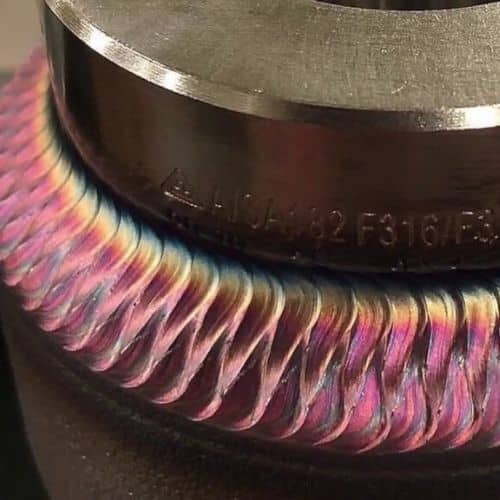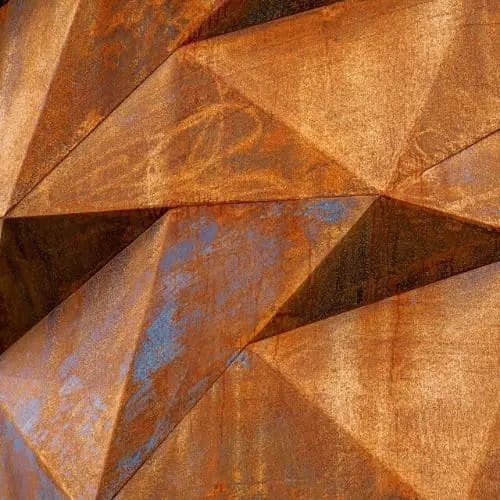
Welding provides us an excellent way to create unique things and bring things to life, which makes it perfect for us to be more creative. Whether you are a hobby welder trying to make money with practical jobs or you are an artist looking for a new way to express yourself, using welding to create art is an excellent way to express yourself or to spend time doing something fun. If you know how to bond metals, you can make almost anything in the world.
I think that most people would agree that welding is an art in itself, each bead you lay and each job you finish is a unique piece of art. Seemingly two jobs that are the same have never the same exact outcome, each project a welder takes on comes out a little different each time. We all have our own unique style and handwriting as there is in art.
There is a number of ways you can marry metal, and usually, there is no “one size fits all” thing, so we are going to take a look at some of the most common welding methods to find out what would be suitable for you.
The Material You Are Planning to Use?
Contents
One thing about welding art is that more than likely you will never run out of materials to use, and even if you do, there is no need to spend a lot of money on it. More than likely people are willing to give away scrap metal for free, or at a very low price. And since it is a form of art, where there are no fixed rules, you can use anything you can get your hands on. From old control arm and shock absorbers to bearings, chains, washers, bolts, and nuts.
So we have to figure out the materials you are planning to use to find the most suitable welding method. Below is a list of questions I would advise you to consider.
- Are you planning to use mostly mild steel?
- Would it be thin, less than 1/8 – inches thick?
- How much are you planning to weld aluminum and stainless steel?
- Are you looking to weld exotic materials like aluminum, copper, and magnesium?
TIG welding
I would say that Tungsten Inert Gas welding is most likely the most used method for artists who want to create really pleasing sculptures. It is mostly used to weld delicate materials like aluminum, stainless steel, copper and magnesium. The method itself is spatter free and looks really clean.
On the other hand, it is more expensive and I would say tricky to learn if you have never welded in your life, and even then, to lay beautiful beads is tricky. I would say that to master this method, you need to practice a lot, but once you master it you should never run out of projects to work on.
The beads, however, are really beautiful if done right. They look like a work of art alone.

It is important to keep in mind that TIG is usually used indoors because the materials need to be really clean before welding. The second reason is that to have a great weld, a shielding gas is used, and as you can assume, any sort of wind or air circulation can blow the shielding gas away.
MIG welding
My second recommendation would be to use Metal Inert Gas Welding for your projects. It is really easy to learn, most likely you just need to tack metal together and I think anyone can do it. Once you buy your welder, you can start right away with your projects, it is really as intuitive as a welding method can be.
With MIG you can weld mild steel, stainless steel, and aluminum. It does a great job with any of the materials mentioned. Now when it comes to the thickness of the material then if you plan to weld materials thinner than or equal to 1/8 of an inch, you can get by with 120 Volt MIG welder. If you want to move on to thicker materials, I would buy a 220-volt machine. With that, you can bond metals that are 1/4 thick and it should be enough for most artists.
As a great addition, unlike TIG welding, MIG can be used outdoors as well to weld mild steel. You only need to make a few adjustments to your machine. The most important would be to change the wire to a flux-cored and reverse the electric polarity of the machine. Using the flux-cored wire also gives you the ability to weld slightly thicker materials. As a downside, it produces more toxic gases, and afterward, you need to remove the slag layer left on the welding bead by the wire.
Stick Welding
Stick welding, or as called by most, arc welding, is with a bit lower start-up cost, but in the long run, you have to spend a lot of money on filler metal and as a huge downside, it is difficult to do precise work with this method. Starting an arc at an exact place to fuse the metal with stick welder is tricky, but on the other hand, you do not need to clean the scrap metal from rust before welding it.
In addition, another downside would be the fact that if you need to weld thin materials you will burn holes in your sculptures and you need to remove the slag coating after welding (like with flux core welding). Usually, it is done by pounding on the bead with a special hammer, which would bend your thin base metal. Stick welding is more suitable for bigger projects that need to be strong and bear a lot of weight. So unless you are going to work outdoors and on huge projects, I would not advise stick welding.
I just completed an article about stick welding aluminum and stainless steel, so if you are interested check them out.

Some extra tools you might need
As a welding artist, you would probably need some more tools to get yourself going. All the tools in the list are not necessary, and I will explain exactly why and when you need them.
- Welding helmet. Safety first! If you do not want to go blind, you better buy a welding helmet.
- Welding gloves. If you do not want to fry your fingers, then you need a pair.
- Angle grinder. If you are planning to do any sort of cutting or grinding then the cheapest way to do it would be buying an angle grinder.
- Torch kit. If you are looking to heat and bend your materials, then the oxy-acetylene kit will make it possible. It will add another possibility for you to form your artwork to the way you want it to be exactly.
Conclusion
I hope that this article helped you choose a method for your metal art projects. As a personal preference, I would choose MIG welding over anything since it is easy to master. Later on, you can move into TIG welding if necessary.
As an extra tip, you can check out this article as well. There you can find some other ways to start bonding metal but without welding.
Welding as an artist is definitely interesting and there are not many people doing it on a regular basis, so if you need any other advice, feel free to drop a comment below!
